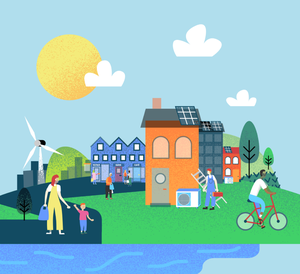Macroeconomics of the Energy Union (Tasks 6 & 7)
Within the series of studies by the European Commission aimed at improving the understanding of the links between EU energy-related policies and the macroeconomic dynamics, I contributed to tasks 6 and 7. Namely, designing and creating the GIS-based data visualisations of the E3ME and GEM-E3-FIT models on the regional and sectoral implications of the clean energy transition.
Modelling the socioeconomic impacts of zero carbon housing in Europe
With 40% of Europe’s energy being used by buildings, translating to 36% of all CO2 emissions, decarbonising the building stock is non-negotiable for reach net-zero. The project analyses how Europe may look like under different net-zero transition pathways in the heating sector. Exploring scenarios from hydrogen boilers to heat pumps, analysing the socio-economic implications of the different pathways.
Renewable Energy Market Analysis: Africa and its Regions
In conjunction with this project, IRENA contracted Cambridge Econometrics to expand their macroeconometric model, E3ME, to be able to provide more granular economic modelling for Africa. Together with other members of the modelling team, I spent several months processing, verifying, and collating the data for 12 new African Regions plus the United Arab Emirates to be added to the model. Based on the extended version of E3ME, several colleagues (mentioned in the acknowledgements of the report) contributed to the economic modelling which the this report is based on.
Warmer Homes and Lower Bills - The impact of the renovation wave
The report assesses the potential impact of the renovation wave on the gas demand for heating in the EU. The analysis was based on a new building stock model developed by Pim Vercoulen and myself. I conducted the scenario modelling which was used to calculate changes in consumer expenditures. The work, was prepared in the lead-up to COP26, and influenced a subsequent report on the building renovations and gas demand.



